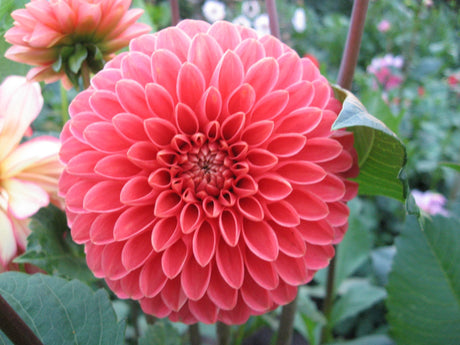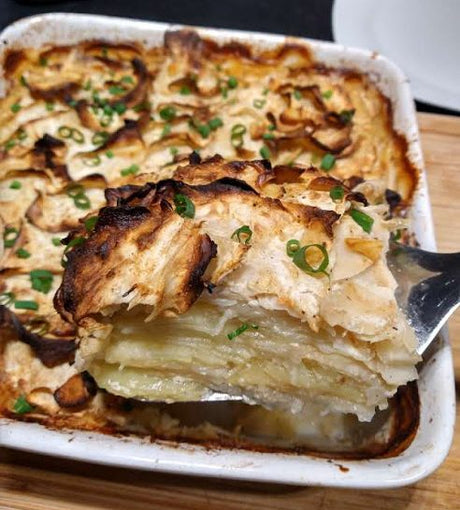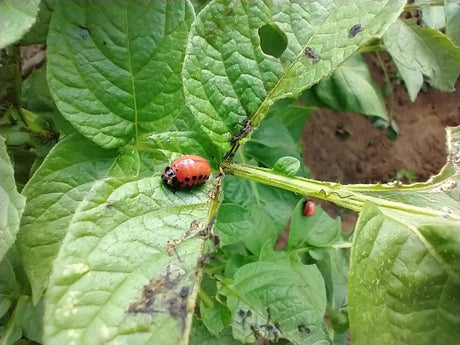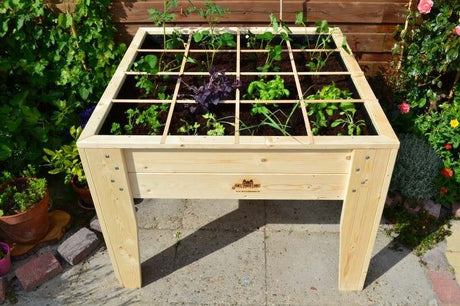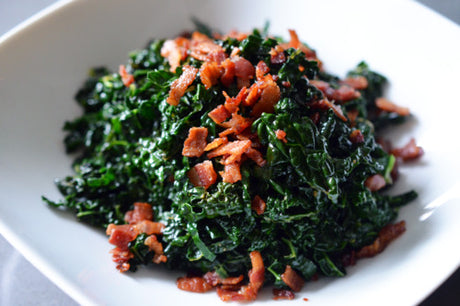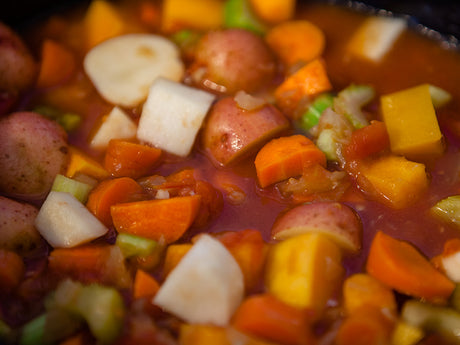Quick start ⚡ Quick start info for sowing cucumbers ⚡
🌱 Sowing & planting
- Latin name: Cucumis sativus
- Sowing depth: 1.3 cm
- Pre-sowing: in 8 cm pots (indoors or under glass)
- Germination temperature: 18–32 °C
- Germination period: 7–10 days
- Planting distance: 120 cm between rows, 20 cm between plants (along mesh or on a climbing rope)
- Growth cycle: ± 105 days
- Plant out: when 2-3 true leaves appear
📅 Growing times
- Greenhouse: Sow indoors late March–mid April or under glass late April–early May; harvest July–September.
- Open ground (pre-grown): sow under glass mid-April–mid-May; plant outdoors mid-May–early June; harvest August–September.
- Open ground (in situ): sow early May–end May; harvest mid-August–end September.
Cucumbers love warmth and grow best sheltered or in a greenhouse.
📘 Basic information
- Crop group: Fruit crop
- Crop family: Cucumber family (Cucurbitaceae)
- Height: 30–150 cm (climber)
- Frost resistant: no
- Root system: 45–60 cm deep
- Fertilization: good composted soil is sufficient
- Preferred soil: pH 5.5–6.8
🧑🌾 Cultivation method step-by-step
- Sow in 7 cm pots at a depth of 1.3 cm, at 18–32 °C.
- Germinate in a warm place; keep the soil slightly moist.
- Plant out when there are 2–3 true leaves, after the frost.
- Train the plants along mesh or rope to save space and create airiness.
- Water regularly and avoid allowing the soil to dry out completely.
- Harvest regularly to continue encouraging the plant to produce new fruits.
🌞💧 Pitch & water
Location: ☀☀☀ lots of sun.
Watering: 💧💧💧 plenty of water – especially in warm weather and when fruiting.
❗ Dangers & Concerns
- Mildew: especially in warm, dry weather in combination with dew.
- Snails: they like to eat young plants and fruits.
🧺 Harvesting & storing
- Harvest medium sized fruits for best flavor and fine seeds.
- Harvest regularly to keep the plant producing for longer.
- Overly large fruits are often more watery and have large, disturbing seeds.
🍽️ Nutritional value
Per 100 g raw cucumber with peel:
- 15 kcal
- 0 g fat
- 4 g carbohydrates
- 1 g protein
- 0 g fiber
- 2 g sugar
- Vitamins: A and C
- Other: pantothenic acid, magnesium, phosphorus, manganese and potassium
Table of Contents:
The term "cucumber season" dates back to the 18th century, when there was little news and little commercial activity during the summer. Cucumbers were, however, available back then. For vegetable gardeners, summer is anything but a time for relaxation; it's a time for enjoying the well-deserved harvest after many months of sowing, transplanting, training, feeding, and watering. Growing cucumbers from seed? This article will tell you all about it.

Growing cucumbers during the silly season is one of the most popular vegetable garden activities in our country and the surrounding area. Originally from Asia, the cucumber is now a well-established vegetable garden plant. It thrives in a greenhouse or conservatory, as well as outdoors in the ground. It's a relatively easy vegetable to grow, so anyone starting a vegetable garden should pay attention. This article offers 16 tips for successfully growing cucumbers in your vegetable garden.
Growing climbing or creeping cucumbers
There are two ways to grow cucumber plants after sowing: with limited support horizontally across the ground, or as a climber with pliable arms that happily climb a climbing frame. Depending on how you want to grow cucumbers, you should choose the right type of cucumber seeds.

The climbing cucumber plants
Climbing cucumber varieties are usually also long cucumbers, such as Chinese Snakes or Marketmore (organic). These are the best choice if you want to grow cucumbers productively. Because the cucumber plants are trained along a climbing system (which can consist of branches, ropes, concrete reinforcement, etc.), the plant produces straighter cucumbers. Moreover, they are less susceptible to diseases and insect pests than those grown on the ground.
The more compact cucumber plants
The mini cucumber, or snack cucumber, Iznik is best suited for horizontal cultivation because the cucumber plants are smaller. These plants are ideal for smaller gardens or square-foot vegetable plots. You can also grow them in pots or containers, but in that case, you'll need to provide some support. A meter of support is more than sufficient. The fruits of the snack cucumber are smaller and ideal for lunchboxes or for those who need more than enough for a meal with a small cucumber.

Growing snack cucumbers (Iznik cucumbers) is very easy if your garden gets plenty of sunshine. If you follow a few simple tips, and you don't have to worry about late spring frosts, you should be able to harvest your cucumbers after 65 to 105 days.
16 tips for growing delicious cucumbers
Planning and preparing
Tip 1: Choose the right cucumber seeds
Choose cucumber seeds from plants that suit your vegetable garden. We've previously discussed climbing varieties and the more compact mini or snack cucumbers. If you have a large garden or a massive greenhouse or conservatory, create a massive climbing system and plant a cucumber plant every 20 cm. The plant has its own claws, allowing it to cling easily. The fruits cling securely to the plant and won't fall off. If you have a balcony, use a 10- to 20-liter pot and grow the snack cucumber. If you have a small vegetable garden, greenhouse, or conservatory, also grow the more compact mini cucumber.
Tip 2: The ideal place in the vegetable garden to grow cucumbers
Choose a sunny and fertile patch of garden with well-drained soil. This can be done in a greenhouse or conservatory , but you can certainly also find success outdoors. Rain and damp conditions are a major enemy of your cucumbers. These can cause powdery mildew on your plants, which you can see as a white residue on the leaves. If you don't have a greenhouse to protect your plants from rain, you might opt for snack cucumbers in pots, which you can easily move indoors or to a sheltered spot during inclement weather.

Just planted: cucumber Marketmore BIO
Tip 3: Sowing indoors earlier is smart
If you want an early harvest and fewer insects on your seedlings, you can sow them indoors in P9 pots a month before the last spring frost is predicted. In the Low Countries, this means sowing from April 15th. The plants will grow like wildfire, especially in a propagator with a grow light. Place your seedlings indoors in a very sunny, warm place. If you have a propagator, germinate these seeds at 24°C. As soon as you see cracking soil or a hint of green, turn on your grow lights and let them shine on your young seedlings for 15 to 18 hours. The result is amazing: sturdy, compact plants that can withstand a blow. When the first pair of true leaves appears, you can harden off your plants in the Greenhouse or greenhouse , but beware of night frost. The plants are very fragile, even in frost. Plant out your cucumber plants when they have 2 to 3 true leaves and before the nights are warmer than 5 degrees Celsius.
Tip 4: Create a climbing system for your climbing cucumber varieties
If you choose climbing varieties, create a structure for your plants to enjoy. You'll be amazed by the strength of their claws as they cling to your structure. You can use various materials. Consider growing your cucumbers on recycled materials; it looks cool, too. An old fence or concrete reinforcement can instantly become a playground for your climbing cucumber plants. It must be sturdy, though; simple string won't be able to support the weight of your plant. If your plant doesn't attach itself well enough, or if the fruits are numerous and heavy, you can provide additional ties and support.

growing cucumbers on rope
Tip 5: You can also grow cucumbers on ropes.

Growing twine on a roll: ideal for determining the length yourself. If you have a certain height in your greenhouse or conservatory and can attach a twine somewhere above, you can also grow cucumbers on twine. Attach a twine to a structure above your plant. Lower a twine to the base of the plant and attach a tomato clip under the first fork in the vine. Then place tomato clips every 30 cm along the vine. This is a very natural way for the plant to grow and has proven successful many times.
Tip 6: Plant your cucumber plants in your vegetable garden after the Ice Saints
Frost is a major enemy of your plants. A single night below freezing and your cucumber plants will be food for the compost heap. Only when you're sure there will be no more frost and that the soil is and remains relatively warm can you start planting in the garden. Sowing directly in the vegetable garden only makes sense once the soil has warmed up to around 15°C. You can measure your vegetable garden soil with a soil thermometer. The ideal pH for cucumbers is between 5.5 and 6.8. You can measure the acidity in your vegetable garden with a pH meter. In this video, you'll see how I plant my cucumbers and other fruit crops in the polytunnel greenhouse.
You can also sow your cucumbers on site

Tip 7: Sow a second time
A common mistake. We sowed indoors on the first day the plants were allowed outside (in my case, sometimes even a few days earlier :p ). We show off our first cucumbers like they're gems. But then it's the end of August, and it's game over. Our neighbors and family are thrilled with all the cucumbers they received as gifts. But if you had spread out your cucumber harvest better, you'd still be eating fresh cucumbers until October. So sow a second crop of cucumbers at the end of May directly in the spot where the cucumbers will grow. If you have slug problems, prepare them first and treat your vegetable garden with slug pellets or nematodes .
Tip 8: Sow in rows (along climbing structures)
Sow your climbers in rows 5 to 10 cm apart and 2.5 cm deep. Thin them out when they are about 8 cm tall, leaving 20 to 30 cm between plants, depending on their emergence.
Tip 9: Sow in piles (for horizontal cultivation, on ropes or in pots)
Just like you sow beans around a stake, you can also sow cucumbers in mounds with a circumference of 30 cm. Cucumbers don't like having their feet in water, hence the mounds. Sow 4 to 5 seeds with your twine in the middle. Keep the two strongest seedlings. If you're growing snack cucumbers in 10- to 20-liter pots with a smaller circumference, make two sowing holes 20 cm apart and sow two seeds per hole. Cut away the weakest seedling when the plants have 2 to 3 true leaves, not counting the cotyledons. When thinning, don't pull the seedlings out, but cut them down to the ground to avoid damaging the root system of the remaining plants.

Caring for cucumber plants
Tip 10: Keep your soil evenly moist
To prevent your homegrown cucumber from tasting bitter, growing crooked, or being unevenly thick, you need to water the soil regularly. If you don't, you'll end up with an off-flavor or odd shapes. In dry, warm weather or in a greenhouse or conservatory, it's best to water it daily. It's better to water a little every day than a lot once a week.

Tip 11: Feed your cucumbers regularly
Add fertilizer four weeks after sowing; cucumbers are voracious eaters. You can use liquid tomato fertilizer, applied biweekly at the base of the plant during your regular watering. You can also use organic fertilizer pellets, working a handful of it into the surface of the plant with a garden rake.
Tip 12: Optional, Apply a layer of mulch
I consider adding a layer of straw to my fruit bed every year when the plants are about half a meter tall, but for convenience, I use root cloth. You do need to apply this before planting your cucumber plants in well-worked, compost-rich soil. With a utility knife, I then make a cross and fold the flaps inward under the root cloth. For planting out P7 and P9 pots, I use a bulb planter. After planting, I fold the flaps back. The video below shows me how I do this with my cabbages.
Tip 13: Patrol for insects every day
If you choose an organic garden, you'll need to check regularly for insects. Did you use organic slug pellets early in the season, or were your chickens actively searching for slug eggs and feasting on them in your vegetable garden during the winter? Then you might already be well ahead of the slugs.
Tip 14: Control the cucumber beetle when you see it
It's not very common in our regions, but if you do see the cucumber beetle (see photo), you should try to end its habits and life cycle, also known as killing it. You can also combat young plants with insect netting . For mature plants, use an ecological insecticide for hard-shelled or shell-shaped insects. It's not easy to eradicate hard-shelled beetles. Also, keep in mind that insecticides also kill many beneficial insects. You can also choose to try again if the crop fails due to insects, or buy organically grown cucumbers from the store. However, the chance of being infested in this way is small.

Tip 15: Harvest cucumbers regularly
Once your cucumbers have reached the desired size, it's best to harvest them. Don't let them get too large or turn yellow, as they'll be unpalatable. It's better to divide them rather than leave too many hanging. Harvesting also encourages the plant to produce more. Don't forget to water and fertilize. Apply liquid fertilizer every two weeks or organic fertilizer pellets every two months. Many plants die prematurely due to insufficient nutrition and water.
Tip 16: View our handy cucumber sowing crop sheet
The cucumber sowing crop sheet provides a comprehensive overview of this crop, including good neighbors, bad neighbors, sowing depths, and spacing. If you found this information useful, please share this post using the social media buttons. You can also support our site by purchasing your gardening supplies from our online store.
Wishing you a pleasant and fruitful crop, Tom



